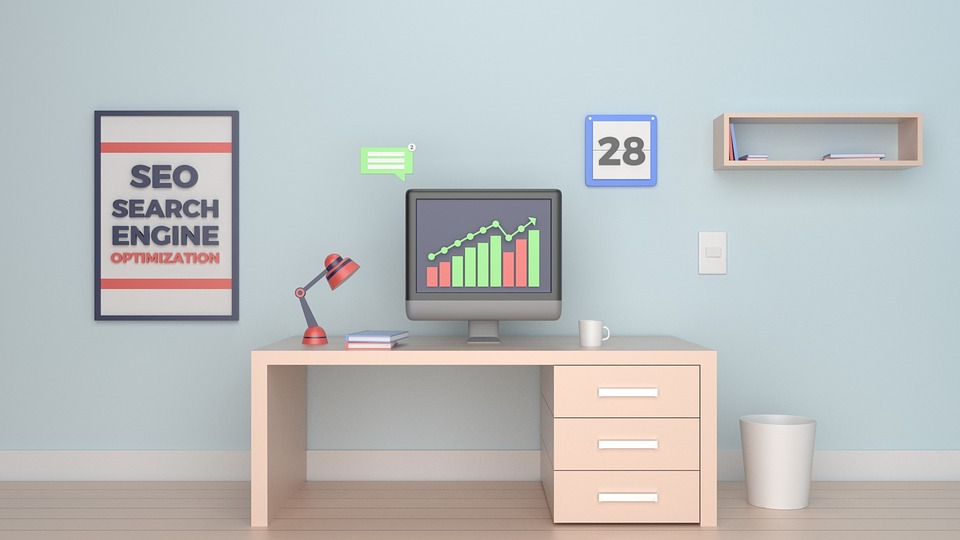The importance of Search Engine Optimization ( SEO ) is well known nowadays for being an efficient way to improve your website’s ranking position, bringing it closer to the top positions in the search results of search engines (Google, Yahoo, Bing, etc.).
Applying SEO rules also helps you improve your website’s usability and user experience.
There are 2 types of SEO to improve your website’s ranking position and for good results, you can’t be doing one without the other: On-site SEO and Off-site SEO
On-site SEO:
It’s about what to apply on your website to make it get higher ranking in search results.
Keywords
Are they still important in 2019? Yes, they are! As the list of ranking factors for Google grows continuously, keywords still remain quite important.
First of all, you must do research to find out the right keywords to use. You can do this by using an online tool that lets you find keywords and find out which keywords your site is ranking for. It’s recommended to use these tools to find out what keywords works successfully for competitors in your niche.
Use keywords wisely, avoid stuffing and overusing them, you might end up being penalized than credited. Make sure you include the keywords in header tags, image alt tags, Meta descriptions, blog categories, page titles, page content, and URLs.
Quality Content
Having good content is one of the most important things in terms of a higher ranking. You know you are having a good content when it’s original and useful, it’s written for users, and it’s engaging for visitors and potential customers.
Ensure you are not having duplicate content or pages with little content on them, also do not copy content from other websites, all these things can bring you downgrading and penalties.
Update your website frequently, make sure you have dynamic fresh content, always bring new information from your niche; this will successfully lead to a higher ranking.
Page Titles and description
Another efficient on site SEO practice is writing an original page title that describes the page’s content very clear and easy to understand for users. Avoid Title Tag Truncation because it doesn’t look good at all.
For the meta description make sure you make it unique, by describing the topic of a page in a catchy and advertising way, attracting more visitors and potential customers.
Domain name
When it comes to picking your domain, for a better search result you must: keep it short(within 15 characters), avoid numbers and hyphens, make it representative for your brand, make it intuitive for giving the clear idea of what your website will be about and keep in mind that it has a big impact on click through rate.
Image Optimization
Images are used as an important tool for engaging with your audience, leading to a good user experience. But they must be used carefully without creating side effects like slowing the page, to avoid this pick the smallest size for your images.
It’s also recommended to use alt text for describing the images, you can use also keywords but not too many. Also, keywords are most effective used by adding them image filenames.
Fast loading pages
As we mentioned in our article “5 ways to improve your site speed“ a fast loading page is an important ranking factor.
What you need to do is to remove anything that slows down your website, like unnecessary plug-ins and cluttered database, use browser catch-in, optimize your images and reduce the overall size of your assets.
The 404 Page
For a better user experience set up a friendly 404 page. Design it so it matches your website, gives a few information of what the problem is about and redirect the users to other pages of your website.
Internal links
If it’s done the right way, internal linking can be a very effective on-site SEO tool.
When you are using links to internal pages on your site, avoid overdoing it and ensure that they are relevant and useful.
User Sitemap
The two main types of user sitemaps XML and HTML are also very important when it comes to on-site SEO.
The XML informs the search engine about the content of your web pages and how frequent it’s updated, and about how pages are related to each other, making it easier for Google to find your site pages and ranking them.
The HTML sitemap it’s about improving user experience by helping the user find all the pages of your website.
We will talk about OFF-site SEO in our next article, stay tuned 🙂

 Share
Share
 Share
Share
 Share
Share

[…] linking is one of the most important parts of SEO on-site optimization. Not only it confers several SEO benefits, like making it easier for search engine spiders to […]
[…] you are implementing your SEO strategy, aiming to get that first page ranking, you can make some mistakes along the way. SEO is the kind […]
[…] A/B testing in terms of SEO […]
[…] name. You need to make sure that you are choosing it right, because it will play a key role in SEO and marketing strategies. It will define your brand and your business and it will be your identity […]
[…] you followed on-site SEO tips , and increased your chances of higher ranking you can also work on building your website trust and […]